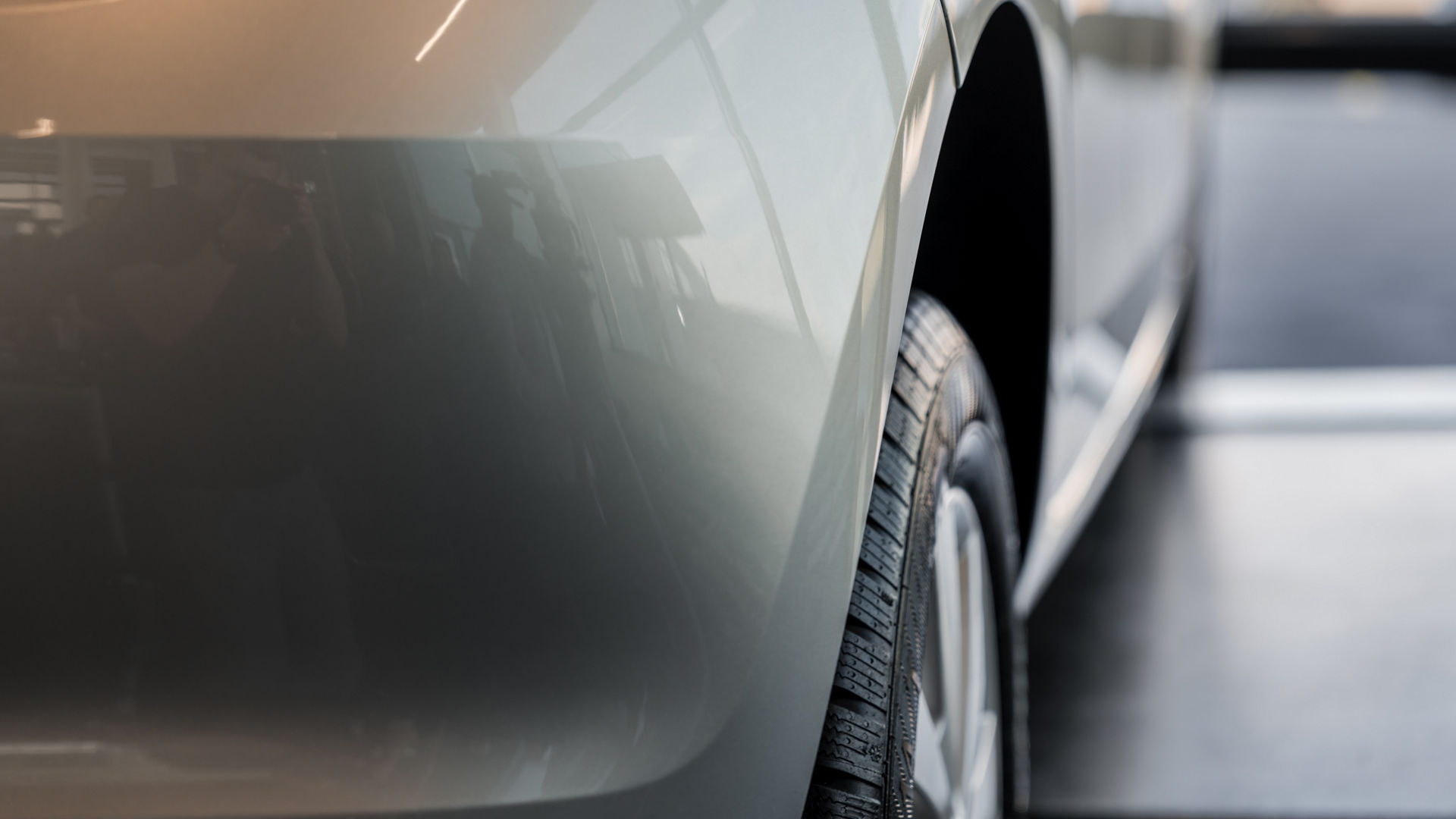2024
Automotive
BODY SHOP EFFICIENCY STARTS WITH SIKA – THE LOW BAKE WAY
Learn how Sika’s new low-bake adhesive technologies are moving the automotive industry forward. What if you could reduce the e-coat oven temperature in your body shop by up to 25°C – and still deliver full performance? Today, many carmakers are doing just this, thanks to a groundbreaking range of low-bake adhesive technologies developed by Sika. What started 10 years ago as research into more sustainable production practices, is now at the forefront of a global megatrend.
Enabling the Paradigm Shift
The historic transition from the Internal Combustion Engine (ICE) to Electric Vehicles (EVs), hybrids and hydrogen vehicles is placing new demands on structural designs. In the automotive body shop, this necessitates adhesives that can handle a complex mix of metals and geometries, while ensuring lighter, stronger, quieter, safer, AND “greener”performance.
More than 25 Million Vehicles
Within the Body-in-White (BIW) stage and many others, Sika is developing value-added innovations that move the automotive industry forward. Proof of this is the fact that more than 50% of vehicles produced annually use Sika technology, and more than 25 million vehicles rely on Sika adhesives for safer and stronger bodies. Now, due to geopolitical events and climate change, the pressure is on to adopt more sustainable manufacturing, with low energy consumption.
The Low-Bake Megatrend
A natural focal point in all this is the body and paint shops, which consume the highest amount of energy and have the highest CO2 emissions. Here, the use of low-bake adhesives has emerged as a game-changer. These innovative adhesives are engineered to cure at lower temperatures, reducing the energy required for the bonding process.
Lower Temps, Same High Performance
Sika identified the low-bake trend more than a decade ago. Its chemists and R&D experts carried out research into low-bake, heat-reactive materials that would allow curing temperatures as low as 135-140°C, compared to the typical 160-200°C required for conventional adhesives. Now the “dream goal” is 120°C, although anything lower (such as “cold bake” processes) will require a complete re-thinking of materials, Sika engineers say.
Energy Savings with 25°C Lower Temperature
First, low-bake adhesives help carmakers reduce energy consumption and contribute to their sustainability goals. Since the body and paint shop consume high amounts of energy in the total automotive production, even a small percent reduction of electricity or heat can be significant, as one Sika engineer points out.
Faster and Reliable Bonding in Hard-to-Reach Places
Secondly, the wider curing window ensures excellent bonding strength in hard-to-reach areas, where the standard targeted temperature is not fully achieved, such as reinforced parts around the battery in EVs or hidden side pockets. As one customer put it: “Insufficient heat dispersion is a challengeand adds more time due to warming up. Low-bake adhesives can potentially save us 10-15 minutes per cycle.”
Partnering to Tailor the Right Solution
To create its low-bake range, Sika teamed up with leading OEMs and component suppliers who were interested in working more sustainably. Together, they identified key requirements and challenges for each automotive body shop. No two lines were the same. However, despite the lower curing temperatures, the products needed to excel in bonding strength, sound blocking and controlled damping, reinforcement, and other key properties for automotive manufacturing. This required a no-compromises approach, tailoring of formulas and a lot of pre-testing.
Low-bake Across the Portfolio
Although Sika low-bake technologies are important in many parts of the vehicle, the focus is on four areas. These include all structural joints, where SikaPower® offers a well-proven range of high-strength adhesives; the rocker panels, where SikaReinforcer® serves as a heat-reactive and foamable epoxy material used for reinforcement; and in selected places,SikaDamp®; a family of sound deadening and vibration-reduction products. Finally, there is SikaBaffle®, which includes low-bake materials designed to improve vehicle acoustic performance by effectively sealing the car body and reducing noise transmission.
Strategic, Collaborative Approach
By taking a collaborative approach on sustainability and working as a strategic partner to automotive customers, Sika is developing solutions that reduce costs, simplify processes, and improve carbon reduction efforts. Clearly, sustainable vehicle design and manufacturing are becoming major factors in tomorrow’s car production.
Move Forward with Sika
The cost savings and environmental benefits of adopting low-bake adhesives make them a win-win solution for the automotive industry, moving the industry forward towards a greener and more efficient future.
How Can We Help Move Your Business Forward?
Sika Automotive Low-Bake Manufacturing Services Include:
- Consulting: Low-bake product selection support and advice
- Reporting and approvals: Test reporting for simplified end customer approvals
- Networks: Collaboration & connections with testing institutes and local engineering and technology partners
- System engineering: Design, implementation and system commissioning support
The low-bake facts and benefits:
- > 50% of vehicles produced annually use Sika technology.
- > 25 million vehicles rely on Sika adhesives for safer and stronger bodies
- 135-140°C curing versus standard temps of 160-200°C
- CO2 reduction & energy saving up to 25°C lower e-coat oven temperature with low-bake solutions
- Faster cycle times – oven time (at conventional temperatures) can be reduced by 10–15 minuts to cure cold spots
Benefits Beyond the Bond
Welcome to Automotive Benefits Beyond the Bond, Sika’s video series, where we dive deep into the world of automotive innovation and learn what is driving the industry forward! Each episode brings you exclusive insights into the future of vehicle design, manufacturing, and sustainability, guided by our experts and industry leaders. Get ready for in-depth interviews, product demos, and insightful discussions with top automotive manufacturers and suppliers—all exploring how advanced adhesive solutions are transforming the way vehicles are built.
Unlock Expert Insights – Request Brochure Now!
Further Reading

